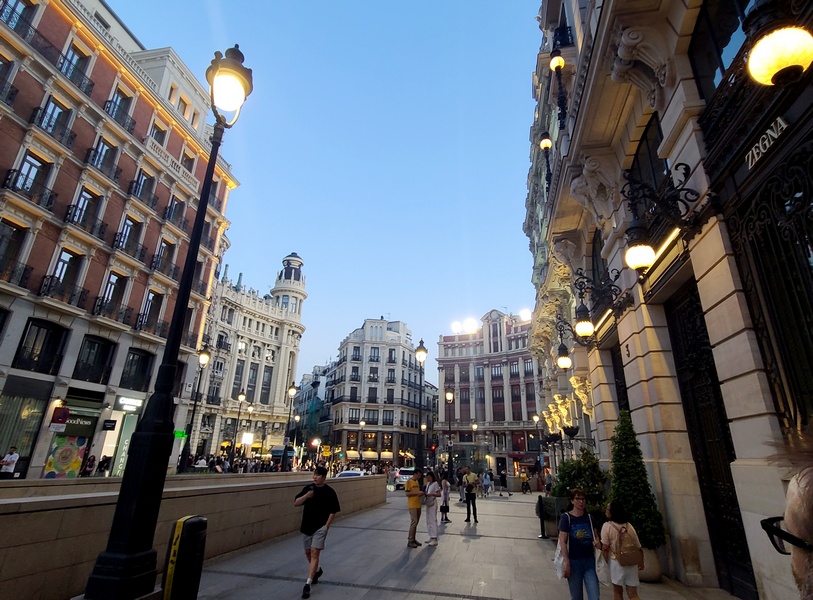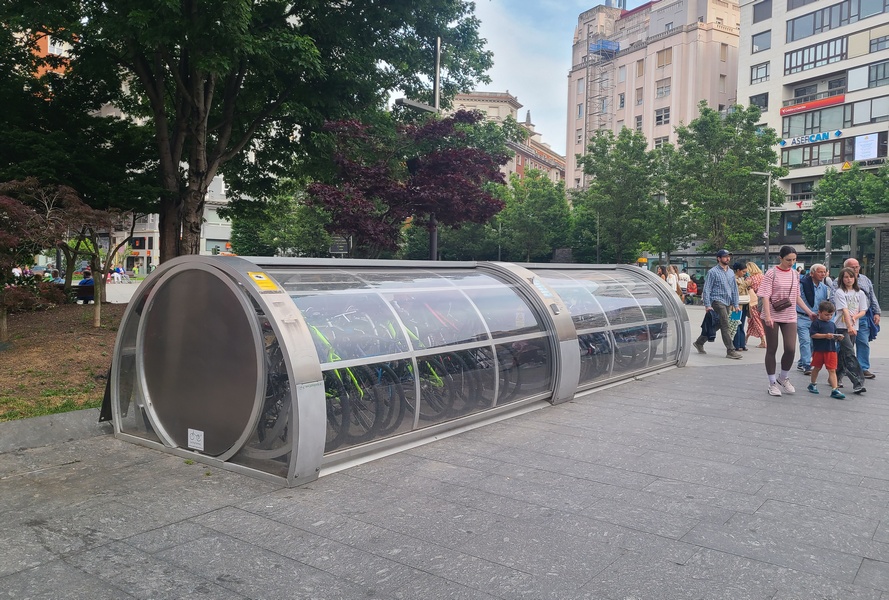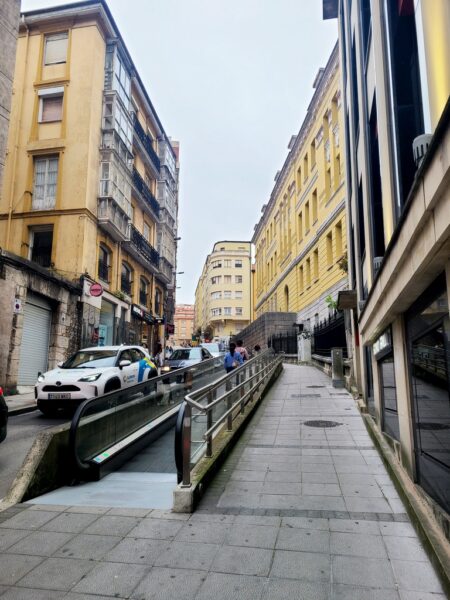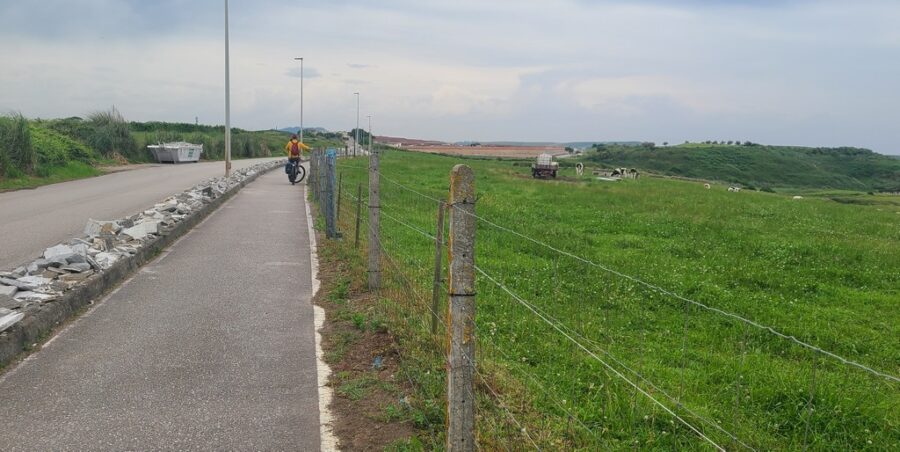Perspectives From Spain: On Foot and By Bike

One of the things I value about travel, is looking back on my life from a distance and seeing it with a fresh perspective. Often when people return to the Comox Valley from a trip, they realize what a green and luscious place they live in and how fresh the air is. After a recent trip to Spain, I saw the Comox Valley through a European lens. What stood out was the difference in design of mid-size cities, compared to here – especially when it came to biking or walking.
As someone who loves biking and the outdoors, what I appreciated in Spain, was the relative ease and safety of these modes of travel. In Europe, the automobile came after cities were established, so it had to fit around areas already designed for walking or horses.
Europeans often live in high density places, like apartments, so residents simply do not have the room or necessity for cars. To cater to this walking population, there is a grocery store or pharmacy on every couple of blocks. With more people out and about, there are also large car-free city squares and many garbage receptacles, separated for compost, plastic or cardboard. An army of city workers came out every night to clean all traces of the day before.

Most of our trip was spent in the north, in Santander, San Sebastian and Bilbao. Bilbao has a river that divides the city, like Courtenay (though the population is closer to Victoria’s) with three pedestrian-only bridges and wide boardwalks lining either side of the river. In these cities, bike lanes are often two-way and separated from traffic, with their own traffic lights.
We went on a guided bike tour of San Sebastian, where we experienced how this network of bike lanes thread through traffic. On the tour, it felt like bikes owned the streets as much as cars. I also appreciated that the designated biking and pedestrian paths were separate, so you could bike or walk freely without having to worry about the other.

Also, traffic is less intimidating in Europe. Because of the lack of space and the price of gas, cars tend to be small and there are many more scooters. Outside the window of our room in Santander, I counted over fifty scooters all parked diagonally in a row on a narrow street.

In cities geared for pedestrians and cyclists, we saw some strange things, like an outdoor elevator and an escalator in place of a sidewalk. On the pedestrian sidewalks we saw many variations on the park bench, including reclining benches, benches placed in a circle or benches with pedals at the feet, so you could pedal while sitting. And it’s not like they have perfect weather for being outdoors. The winters may be milder in Northern Spain, but it also rains a lot. Umbrellas are a thing.

Upon returning home, I was more aware of our attempts to make the Comox Valley friendlier for pedestrians and bikes such as; designated bike lanes, sidewalks separated from traffic or widened at intersections to making crossings shorter. Also, the moves to connect and increase the network of greenways. I think this is important because, the more people that are visible outside (not hiding in cars), the less isolated I think everyone feels – maybe even more empathetic or at least tolerant of each other. I noticed feeling safe in the streets of Spain, even at night, because there are so many people out and about.
In the Comox Valley and North America in general, everyone can own trucks or vehicles for camping – we have more room and can spread out. It is much farther to travel between cities and travel by rail or buses isn’t necessarily available (this would be another story). Also, winters can be harsh. We really depend on our vehicles more.
However, the world population is increasing (it has doubled in my lifetime) and we are slowly, almost imperceptibly, chipping away at our green areas to make way for development. Increasing walkability and green areas in cities, gives people something to do, places to exercise, keeps the air fresher, cooler when it’s hot, makes it less busy and quieter. And with our bigger vehicles and larger amount of space, it seems logical to have biking or walking lanes totally separated from regular traffic whenever possible.
I wonder if in the future we will see tourists doing electric bike tours of the Comox Valley, safely and seamlessly crossing between Comox, Courtenay, Royston and on a separated bike path to Cumberland (just putting that out there). To do this, the goal might be to make all types of non-vehicle travel look and feel as accessible and fun as it does in Europe.

Photos from top to bottom: Downtown Madrid, cars in single lane between large pedestrian areas // Bilbao, garbage receptacles to separate garbage and I believe that is a 2-way bike lane crossing in the middle // San Sebastian, can bike or walk along the entire waterfront // System to stop bike theft, lock under this plastic bubble // Outdoor escalator // Separated bike line and waterfront real estate for cows.

